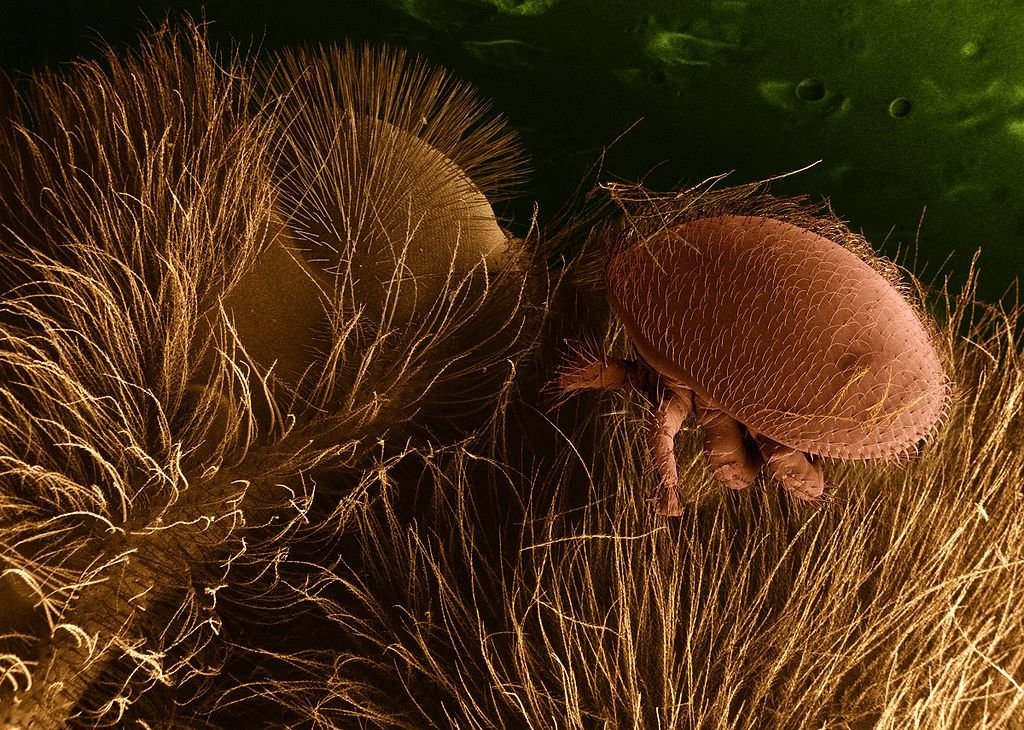My Plans for the Varroa Mite Incursion: Navigating the Future of Beekeeping
Hello, fellow bee enthusiasts,
It's been a year since the Varroa mite first showed its uninvited face here in Australia. Like many of you, I'd been observing the situation with a mix of fascination and denial, secretly hoping the problem would somehow sort itself out. But it's clear now that we're past the point of idle speculation. This unwelcome guest is here to stay, and it's high time we start devising a battle plan.
When I attended my first disease conference years ago, we discussed hive beetles, foulbrood, and other pests, with one speaker bringing up the Varroa mite. At the time, Australia was free from this pest, but there was an ominous understanding that it was a question of 'when', not 'if' the mite would arrive. Well, here we are today, wrestling with the very issue we dreaded.
Varroa mites partially hidden under honey bee abdominal segments (photo credit Dr M. Goodwin).
The looming question now is: What does our beekeeping future look like? For me, I'm considering reducing the size of my apiary to manage the mite's potential impact. The logistics of this, however, may prove challenging, and it's just one of the many complexities we're grappling with.
We're fortunate to be the last major landmass to experience this incursion. Many other countries have been battling the Varroa mite for decades, providing us with valuable insight and strategies. We're standing on the shoulders of beekeeping giants, and it's our responsibility to learn from their triumphs and tribulations.
Understanding the enemy is the first step. These mites don't necessarily kill bees outright; instead, they latch onto them, sucking out their fat, weakening their health, and leaving them vulnerable to other diseases. It's a sobering reality, but it's also a challenge we can tackle together.
One positive takeaway is that despite the presence of these mites, beekeeping continues globally. Us beekeepers are resilient mob; with due diligence, constant monitoring, and appropriate interventions, we can still sustain our bee populations.
Courtesy, Eric Erbe, Christopher Pooley: USDA, ARS, EMU
Beekeeping has always been about community, sharing knowledge and supporting each other. In light of the Varroa mite incursion, I believe it's time to leverage this collective strength. While large-scale beekeepers might already have contingency plans, we smaller players can benefit from open conversations and shared experiences.
I still remember the first time I discovered foulbrood in my hive. It was a devastating blow, a potent mix of helplessness and despondency. I'm guessing that feeling might resurface the first time I see Varroa mites in my hives. But let's remember - we are not alone in this journey. We have the global beekeeping community backing us up, and together, we can navigate these challenging times.
No matter the adversary, my love for these incredible creatures remains undiminished. I'll continue beekeeping, even with the threat of the Varroa mite looming large. And I hope you join me in this resolution. Let's share our thoughts, ideas, and plans. Let's tackle this challenge head-on and secure a future for our beloved bees.



